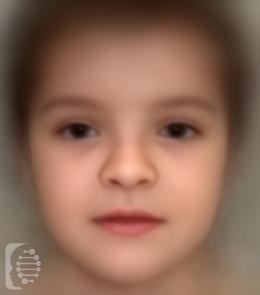What is Cleidocranial Dysplasia (CCD)?
Cleidocranial Dysplasia is a rare genetic condition that mainly affects the development of the bones and teeth.
It is believed to occur in 1 in 1 million people, but the numbers of undiagnosed may be higher due to the fact that the syndrome may cause only very mild symptoms in some individuals.
Syndrome Synonyms:
CCD Cleidocranial Dysostosis; CLCD
What gene change causes Cleidocranial Dysplasia (CCD)?
Mutations in the RUNX2 gene are responsible for causing the syndrome. Although around 30% of cases have an unknown cause and show no mutations in the RUNX2 gene. It is inherited in an autosomal dominant pattern
In the case of autosomal dominant inheritance, just one parent is the carrier of the gene mutation, and they have a 50% chance of passing it onto each of their children. Syndromes inherited in an autosomal dominant inheritance are caused by just one copy of the gene mutation.
What are the main symptoms of Cleidocranial Dysplasia (CCD)?
Symptoms may vary greatly amongst individuals with Cleidocranial Dysplasia.
However most individuals are affected by abnormalities in the development of the bones: they may be more fragile, absent, or develop differently. This may also lead to decreased bone density and an increased risk of developing osteoporosis.
Individuals may present with under-developed or absent collarbones, this in turn leads to a narrow and sloping of the shoulders.
There is also often delayed development of the cranium (skull) with the condition, and for many individuals, the fontanelles (the soft spot at the top of the head) do not close as they would normally during early childhood and stays open well into adulthood.
Additional physical characteristics of the syndrome include a shorter stature, broad thumbs, and tapered fingers. Other possible symptoms are knock knees, flat feet, and spinal curvature (scoliosis).
Unique facial features of the condition include brachycephaly (a wide, short skull), a prominent forehead, wide-set eyes, a flat nose, and a small upper jaw
Possible clinical traits/features:
Aplastic clavicle, Syringomyelia, Cervical ribs, Absent paranasal sinuses, Absent frontal sinuses, Frontal bossing, Midface retrusion, Wide pubic symphysis, Spondylolisthesis, Spondylolysis, Wormian bones, Scoliosis, Thickened calvaria, Autosomal dominant inheritance, Parietal bossing, Persistent open anterior fontanelle, Increased bone mineral density, Abnormal facility in opposing the shoulders, Increased number of teeth, Increased susceptibility to fractures, Narrow palate, Neonatal respiratory distress, Narrow chest, Moderately short stature, Large foramen magnum, Long second metacarpal, Micrognathia, Brachydactyly, Coxa vara, Cone-shaped epiphyses of the phalanges of the hand, Cleft palate, Malar flattening, Delayed pubic bone ossification, Delayed eruption of primary teeth, Delayed eruption of permanent teeth, Hypoplastic scapulae, Short ribs, Hypoplasia of dental enamel, Hypoplastic iliac wing, Hypoplastic frontal sinuses, Short femoral neck, Short clavicles, High palate, Short middle phalanx of the 2nd finger.
How is it diagnosed?
To find out if someone has a diagnosis of Cleidocranial Dysplasia (CCD), it is important to have a consultation and evaluation with a clinical genetic specialist. Specialists may also suggest specific genetic testing or other types of tests to help reach a diagnosis. FDNA’s AI technology can help speed up the diagnostic process by analyzing facial features and other health information.

